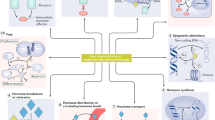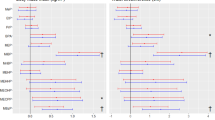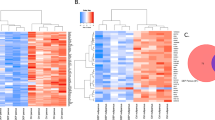Abstract
The concept of endocrine disruption emerged over a decade ago with the observation that several natural or industrial compounds can interfere with estrogen and androgen signaling, and thereby affect both male and female reproductive functions. Since then, many endocrine-disrupting chemicals (EDCs) have been identified and the concept has been broadened to receptors regulating other aspects of endocrine pathways. In that context, interference of EDCs with receptors regulating metabolism has been proposed as a factor that could contribute to metabolic diseases such as obesity and diabetes. We review recent studies showing that several pollutants, including phthalates and organotins, interfere with PPAR (peroxisome proliferator-activated receptors) nuclear receptors and may thereby affect metabolic homeostasis. Particular emphasis is given on the mechanisms of action of these compounds. However, unlike what has been suspected, we provide evidence from mouse models suggesting that in utero exposure to the phthalate ester di-ethyl-hexyl-phthalate most likely does not predispose to obesity. Collectively, these studies define a subclass of EDCs that perturb metabolic signaling and that we propose to define as metabolic disruptors.
This is a preview of subscription content, access via your institution
Access options
Subscribe to this journal
Receive 12 print issues and online access
$259.00 per year
only $21.58 per issue
Buy this article
- Purchase on Springer Link
- Instant access to full article PDF
Prices may be subject to local taxes which are calculated during checkout


Similar content being viewed by others
References
Waring RH, Harris RM . Endocrine disrupters: a human risk? Mol Cell Endocrinol 2005; 244: 2–9.
Tabb MM, Blumberg B . New modes of action for endocrine-disrupting chemicals. Mol Endocrinol 2006; 20: 475–482.
Markey CM, Rubin BS, Soto AM, Sonnenschein C . Endocrine disruptors: from Wingspread to environmental developmental biology. J Steroid Biochem Mol Biol 2002; 83: 235–244.
Inoshita H, Masuyama H, Hiramatsu Y . The different effects of endocrine-disrupting chemicals on estrogen receptor-mediated transcription through interaction with coactivator TRAP220 in uterine tissue. J Mol Endocrinol 2003; 31: 551–561.
Lonard DM, Tsai SY, O'Malley BW . Selective estrogen receptor modulators 4-hydroxytamoxifen and raloxifene impact the stability and function of SRC-1 and SRC-3 coactivator proteins. Mol Cell Biol 2004; 24: 14–24.
Henley DV, Korach KS . Endocrine-disrupting chemicals use distinct mechanisms of action to modulate endocrine system function. Endocrinology 2006; 147: S25–S32.
Heindel JJ . Endocrine disruptors and the obesity epidemic. Toxicol Sci 2003; 76: 247–249.
Baillie-Hamilton PF . Chemical toxins: a hypothesis to explain the global obesity epidemic. J Altern Complement Med 2002; 8: 185–192.
Grun F, Blumberg B . Perturbed nuclear receptor signaling by environmental obesogens as emerging factors in the obesity crisis. Rev Endocr Metab Disord 2007; 8: 161–171.
Newbold RR, Padilla-Banks E, Jefferson WN, Heindel JJ . Effects of endocrine disruptors on obesity. Int J Androl 2008; 31: 201–208.
Toschke AM, Koletzko B, Slikker Jr W, Hermann M, von Kries R . Childhood obesity is associated with maternal smoking in pregnancy. Eur J Pediatr 2002; 161: 445–448.
Montgomery SM, Ekbom A . Smoking during pregnancy and diabetes mellitus in a British longitudinal birth cohort. BMJ 2002; 324: 26–27.
Grün F, Watanabe H, Zamanian Z, Maeda L, Arima K, Cubacha R et al. Endocrine-disrupting organotin compounds are potent inducers of adipogenesis in vertebrates. Mol Endocrinol 2006; 20: 2141–2155.
Barker DJ . Fetal origins of coronary heart disease. BMJ 1995; 311: 171–174.
Newbold RR, Padilla-Banks E, Snyder RJ, Jefferson WN . Developmental exposure to estrogenic compounds and obesity. Birth Defects Res A Clin Mol Teratol 2005; 73: 478–480.
Newbold RR, Padilla-Banks E, Snyder RJ, Jefferson WN . Perinatal exposure to environmental estrogens and the development of obesity. Mol Nutr Food Res 2007; 51: 912–917.
Frederiksen H, Skakkebaek NE, Andersson AM . Metabolism of phthalates in humans. Mol Nutr Food Res 2007; 51: 899–911.
Huber WW, Grasl-Kraupp B, Schulte-Hermann R . Hepatocarcinogenic potential of di(2-ethylhexyl)phthalate in rodents and its implications on human risk. Crit Rev Toxicol 1996; 26: 365–481.
Heudorf U, Mersch-Sundermann V, Angerer J . Phthalates: toxicology and exposure. Int J Hyg Environ Health 2007; 210: 623–634.
Gayathri NS, Dhanya CR, Indu AR, Kurup PA . Changes in some hormones by low doses of di (2-ethyl hexyl) phthalate (DEHP), a commonly used plasticizer in PVC blood storage bags & medical tubing. Indian J Med Res 2004; 119: 139–144.
Stahlhut RW, van Wijngaarden E, Dye TD, Cook S, Swan SH . Concentrations of urinary phthalate metabolites are associated with increased waist circumference and insulin resistance in adult US males. Environ Health Perspect 2007; 115: 876–882.
Willson TM, Moore JT . Genomics versus orphan nuclear receptors—a half-time report. Mol Endocrinol 2002; 16: 1135–1144.
Guan HP, Ishizuka T, Chui PC, Lehrke M, Lazar MA . Corepressors selectively control the transcriptional activity of PPARgamma in adipocytes. Genes Dev 2005; 19: 453–461.
Bainy AC . Nuclear receptors and susceptibility to chemical exposure in aquatic organisms. Environ Int 2007; 33: 571–575.
Harvey CB, Williams GR . Mechanism of thyroid hormone action. Thyroid 2002; 12: 441–446.
Lin HK, Altuwaijri S, Lin WJ, Kan PY, Collins LL, Chang C . Proteasome activity is required for androgen receptor transcriptional activity via regulation of androgen receptor nuclear translocation and interaction with coregulators in prostate cancer cells. J Biol Chem 2002; 277: 36570–36576.
Wijayaratne AL, McDonnell DP . The human estrogen receptor-alpha is a ubiquitinated protein whose stability is affected differentially by agonists, antagonists, and selective estrogen receptor modulators. J Biol Chem 2001; 276: 35684–35692.
Masuyama H, Inoshita H, Hiramatsu Y, Kudo T . Ligands have various potential effects on the degradation of pregnane X receptor by proteasome. Endocrinology 2002; 143: 55–61.
Anway MD, Cupp AS, Uzumcu M, Skinner MK . Epigenetic transgenerational actions of endocrine disruptors and male fertility. Science 2005; 308: 1466–1469.
Feige JN, Gelman L, Michalik L, Desvergne B, Wahli W . From molecular action to physiological outputs: peroxisome proliferator-activated receptors are nuclear receptors at the crossroads of key cellular functions. Prog Lipid Res 2006; 45: 120–159.
Desvergne B, Wahli W . Peroxisome proliferator-activated receptors: nuclear control of metabolism. Endocr Rev 1999; 20: 649–688.
Qi C, Zhu Y, Reddy JK . Peroxisome proliferator-activated receptors, coactivators, and downstream targets. Cell Biochem Biophys 2000; 32 Spring: 187–204.
Auwerx J . PPARgamma, the ultimate thrifty gene. Diabetologia 1999; 42: 1033–1049.
Escher P, Wahli W . Peroxisome proliferator-activated receptors: insight into multiple cellular functions. Mutat Res 2000; 448: 121–138.
Heneka MT, Landreth GE . PPARs in the brain. Biochim Biophys Acta 2007; 1771: 1031–1045.
Michalik L, Wahli W . Peroxisome proliferator-activated receptors (PPARs) in skin health, repair and disease. Biochim Biophys Acta 2007; 1771: 991–998.
Barish GD, Narkar VA, Evans RM . PPAR delta: a dagger in the heart of the metabolic syndrome. J Clin Invest 2006; 116: 590–597.
Bility MT, Thompson JT, McKee RH, David RM, Butala JH, Vanden Heuvel JP et al. Activation of mouse and human peroxisome proliferator-activated receptors (PPARs) by phthalate monoesters. Toxicol Sci 2004; 82: 170–182.
Hurst CH, Waxman DJ . Activation of PPARalpha and PPARgamma by environmental phthalate monoesters. Toxicol Sci 2003; 74: 297–308.
Lapinskas PJ, Brown S, Leesnitzer LM, Blanchard S, Swanson C, Cattley RC et al. Role of PPARalpha in mediating the effects of phthalates and metabolites in the liver. Toxicology 2005; 207: 149–163.
Shipley JM, Hurst CH, Tanaka SS, DeRoos FL, Butenhoff JL, Seacat AM et al. trans-activation of PPARalpha and induction of PPARalpha target genes by perfluorooctane-based chemicals. Toxicol Sci 2004; 80: 151–160.
Vanden Heuvel JP, Thompson JT, Frame SR, Gillies PJ . Differential activation of nuclear receptors by perfluorinated fatty acid analogs and natural fatty acids: a comparison of human, mouse, and rat peroxisome proliferator-activated receptor-alpha, -beta, and -gamma, liver X receptor-beta, and retinoid X receptor-alpha. Toxicol Sci 2006; 92: 476–489.
Kanayama T, Kobayashi N, Mamiya S, Nakanishi T, Nishikawa J . Organotin compounds promote adipocyte differentiation as agonists of the peroxisome proliferator-activated receptor gamma/retinoid X receptor pathway. Mol Pharmacol 2005; 67: 766–774.
Takeuchi S, Matsuda T, Kobayashi S, Takahashi T, Kojima H . In vitro screening of 200 pesticides for agonistic activity via mouse peroxisome proliferator-activated receptor (PPAR)alpha and PPARgamma and quantitative analysis of in vivo induction pathway. Toxicol Appl Pharmacol 2006; 217: 235–244.
Upham J, Acott PD, O'regan P, Sinal CJ, Crocker JF, Geldenhuys L et al. The pesticide adjuvant, Toximul, alters hepatic metabolism through effects on downstream targets of PPARalpha. Biochim Biophys Acta 2007; 1772: 1057–1064.
Reddy JK, Azarnoff DL, Hignite CE . Hypolipidaemic hepatic peroxisome proliferators form a novel class of chemical carcinogens. Nature 1980; 283: 397–398.
Berger J, Moller DE . The mechanisms of action of PPARs. Annu Rev Med 2002; 53: 409–435.
Lee SS, Pineau T, Drago J, Lee EJ, Owens JW, Kroetz DL et al. Targeted disruption of the alpha isoform of the peroxisome proliferator-activated receptor gene in mice results in abolishment of the pleiotropic effects of peroxisome proliferators. Mol Cell Biol 1995; 15: 3012–3022.
Corton JC, Lapinskas PJ . Peroxisome proliferator-activated receptors: mediators of phthalate ester-induced effects in the male reproductive tract? Toxicol Sci 2005; 83: 4–17.
Ward JM, Peters JM, Perella CM, Gonzalez FJ . Receptor and nonreceptor-mediated organ-specific toxicity of di(2-ethylhexyl)phthalate (DEHP) in peroxisome proliferator-activated receptor alpha-null mice. Toxicol Pathol 1998; 26: 240–246.
Feige JN, Gelman L, Rossi D, Zoete V, Métivier R, Tudor C et al. The endocrine disruptor monoethyl-hexyl-phthalate is a selective peroxisome proliferator-activated receptor gamma modulator that promotes adipogenesis. J Biol Chem 2007; 282: 19152–19166.
Gelman L, Feige JN, Desvergne B . Molecular basis of selective PPARgamma modulation for the treatment of Type 2 diabetes. Biochim Biophys Acta 2007; 1771: 1094–1107.
Cronet P, Petersen JF, Folmer R, Blomberg N, Sjöblom K, Karlsson U et al. Structure of the PPARalpha and -gamma ligand binding domain in complex with AZ 242; ligand selectivity and agonist activation in the PPAR family. Structure 2001; 9: 699–706.
Nolte RT, Wisely GB, Westin S, Cobb JE, Lambert MH, Kurokawa R et al. Ligand binding and co-activator assembly of the peroxisome proliferator-activated receptor-gamma. Nature 1998; 395: 137–143.
Shi GQ, Dropinski JF, Zhang Y, Santini C, Sahoo SP, Berger JP et al. Novel 2,3-dihydrobenzofuran-2-carboxylic acids: highly potent and subtype-selective PPARalpha agonists with potent hypolipidemic activity. J Med Chem 2005; 48: 5589–5599.
Zoete V, Grosdidier A, Michielin O . Peroxisome proliferator-activated receptor structures: ligand specificity, molecular switch and interactions with regulators. Biochim Biophys Acta 2007; 1771: 915–925.
Feige JN, Gelman L, Tudor C, Engelborghs Y, Wahli W, Desvergne B . Fluorescence imaging reveals the nuclear behavior of peroxisome proliferator-activated receptor/retinoid X receptor heterodimers in the absence and presence of ligand. J Biol Chem 2005; 280: 17880–17890.
Tudor C, Feige JN, Pingali H, Lohray VB, Wahli W, Desvergne B et al. Association with coregulators is the major determinant governing peroxisome proliferator-activated receptor mobility in living cells. J Biol Chem 2007; 282: 4417–4426.
Gelman L, Feige JN, Tudor C, Engelborghs Y, Wahli W, Desvergne B . Integrating nuclear receptor mobility in models of gene regulation. Nucl Recept Signal 2006; 4: e010.
Wallrabe H, Periasamy A . Imaging protein molecules using FRET and FLIM microscopy. Curr Opin Biotechnol 2005; 16: 19–27.
Wouters FS, Verveer PJ, Bastiaens PI . Imaging biochemistry inside cells. Trends Cell Biol 2001; 11: 203–211.
Feige JN, Sage D, Wahli W, Desvergne B, Gelman L . PixFRET, an ImageJ plug-in for FRET calculation that can accommodate variations in spectral bleed-throughs. Microsc Res Tech 2005; 68: 51–58.
Sekar RB, Periasamy A . Fluorescence resonance energy transfer (FRET) microscopy imaging of live cell protein localizations. J Cell Biol 2003; 160: 629–633.
Balint BL, Nagy L . Selective modulators of PPAR activity as new therapeutic tools in metabolic diseases. Endocr Metab Immune Disord Drug Targets 2006; 6: 33–43.
Berger JP, Akiyama TE, Meinke PT . PPARs: therapeutic targets for metabolic disease. Trends Pharmacol Sci 2005; 26: 244–251.
Rusyn I, Peters JM, Cunningham ML . Modes of action and species-specific effects of di-(2-ethylhexyl)phthalate in the liver. Crit Rev Toxicol 2006; 36: 459–479.
Howdeshell KL, Furr J, Lambright CR, Rider CV, Wilson VS, Gray Jr LE . Cumulative effects of dibutyl phthalate and diethylhexyl phthalate on male rat reproductive tract development: altered fetal steroid hormones and genes. Toxicol Sci 2007; 99: 190–202.
Mahood IK, Scott HM, Brown R, Hallmark N, Walker M, Sharpe RM . In utero exposure to di(n-butyl) phthalate and testicular dysgenesis: comparison of fetal and adult end points and their dose sensitivity. Environ Health Perspect 2007; 115 (Suppl 1): 55–61.
Main KM, Mortensen GK, Kaleva MM, Boisen KA, Damgaard IN, Chellakooty M et al. Human breast milk contamination with phthalates and alterations of endogenous reproductive hormones in infants three months of age. Environ Health Perspect 2006; 114: 270–276.
Acknowledgements
We thank Laurent Gelman, Christophe Heligon and Walter Wahli for lively discussion and help. This study was supported by the Swiss National Research Project 50, the Swiss National Science Foundation and the Etat de Vaud.
Author information
Authors and Affiliations
Corresponding author
Additional information
Conflict of interest
The authors have declared no financial interests.
Rights and permissions
About this article
Cite this article
Casals-Casas, C., Feige, J. & Desvergne, B. Interference of pollutants with PPARs: endocrine disruption meets metabolism. Int J Obes 32 (Suppl 6), S53–S61 (2008). https://doi.org/10.1038/ijo.2008.207
Published:
Issue Date:
DOI: https://doi.org/10.1038/ijo.2008.207
Keywords
This article is cited by
-
Phthalates levels in cold-pressed oils marketed in Turkey
Environmental Science and Pollution Research (2020)
-
Phthalates and type 1 diabetes: is there any link?
Environmental Science and Pollution Research (2018)
-
The Genome-Wide Influence on Human BMI Depends on Physical Activity, Life Course, and Historical Period
Demography (2015)
-
Adverse birth outcomes and maternal complications in licensed cosmetologists and manicurists in California
International Archives of Occupational and Environmental Health (2015)
-
Maternal Exposure to Synthetic Chemicals and Obesity in the Offspring: Recent Findings
Current Environmental Health Reports (2015)



